Type Jelly | ||
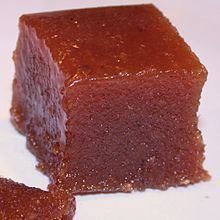 | ||
Similar Quince, Sugar, Marmalade, Goiabada, Pastafrola | ||
Quince cheese or carne membrillo
Quince cheese, also known as dulce de membrillo ([ˈdulθe ðe memˈbɾiʎo]), is a sweet, thick, jelly made of the pulp of the quince fruit. Quince cheese is a common confection in several countries, where it goes by other names, such as carne de membrillo or ate de membrillo in Spanish, marmelada in Portuguese, marmelo in Galician, pâte de coing on French, codonyat in Catalan, cotognata [kotoɲˈɲaːta] in Italian, birsalmasajt [ˈbirʃɒlmɒˈʃɒjt] or birsalmazselé [ˈbirʃɒlmɒˈʒɛleː] in Hungarian and membrilyo in Tagalog. In Australia, it is known as quince paste.
Contents
- Quince cheese or carne membrillo
- Making quince cheese england preserves
- History
- Preparation
- Regional variations
- References
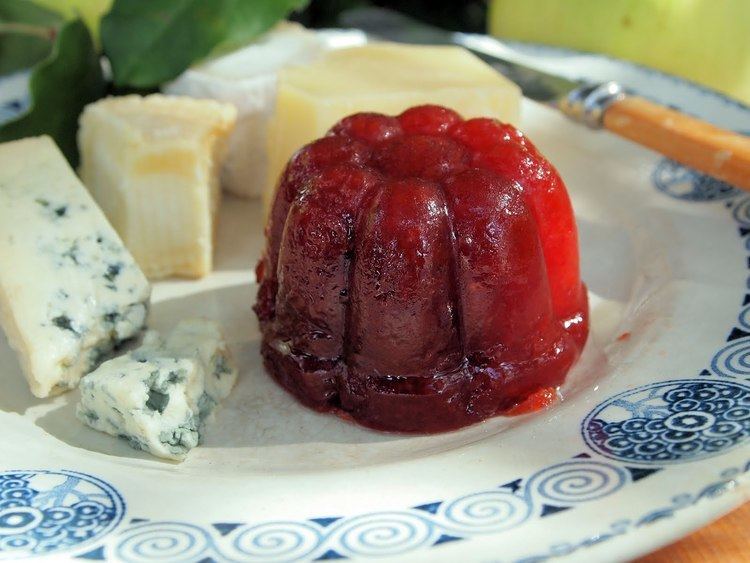
Traditionally and predominantly from Portugal, Italy (exported when the South of Italy was part of the Crown of Aragón) and Spain, dulce de membrillo is a firm, sticky, sweet reddish hard paste made of the quince (Cydonia oblonga) fruit. Dulce de membrillo is also very popular in Australia, America, in Brazil (as marmelada), Uruguay, Argentina, Chile, Peru, and Mexico. In Israel it is a typical Sephardi dish.
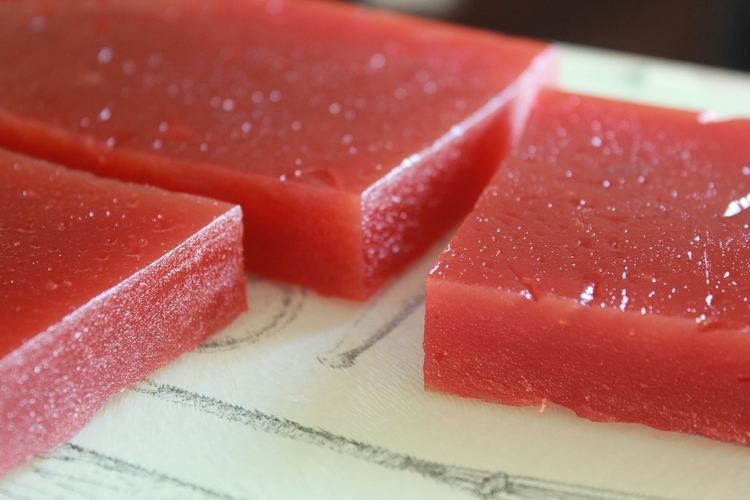
Making quince cheese england preserves
History
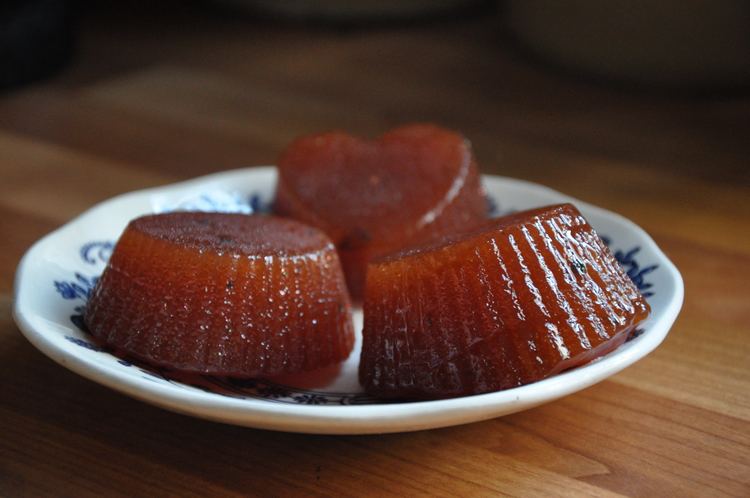
The recipe is probably of ancient origin; the Roman cookbook of Apicius, a collection of Roman cookery recipes compiled in the late 4th or early 5th century AD gives recipes for stewing quince with honey.
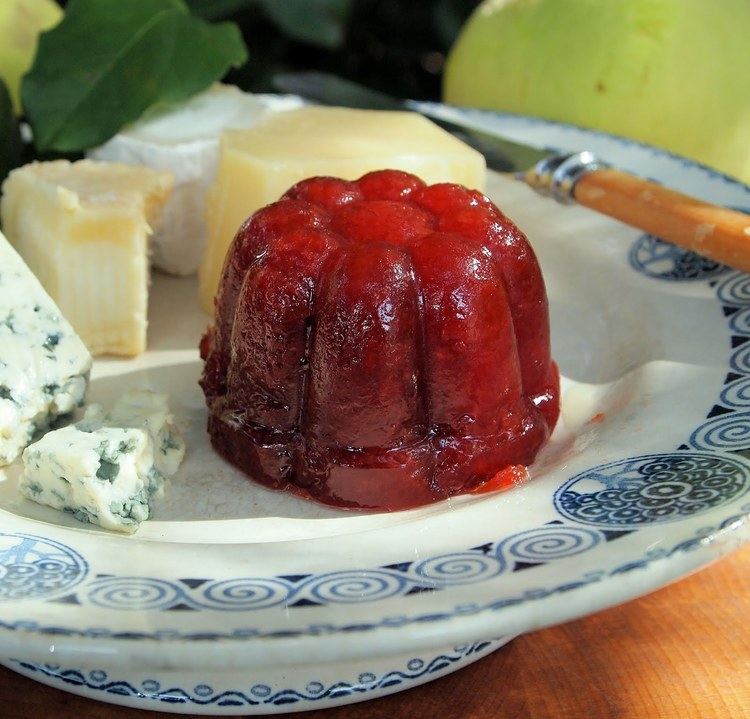
Historically, marmalade was made from quinces. The English word "marmalade" comes from the Portuguese word marmelada, meaning "quince preparation" (and used to describe quince cheese or quince jam; "marmelo" = "quince"). Nowadays (in English) "A marmalade is a jellied fruit product which holds suspended within it all or part of the fruit pulp and the sliced peel. It is prepared from pulpy fruits, preferably those that contain pectin. Citrus fruits are especially desirable because of their flavor and pectin content."
Preparation
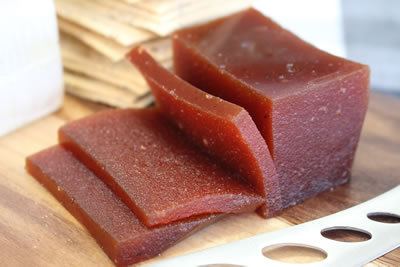
Quince cheese is prepared with quince fruits. The fruit is cooked with sugar, turns red after a long cooking time, and becomes a relatively firm quince jelly, dense enough to hold its shape. The taste is sweet but slightly astringent, and it is similar in consistency, flavor and use to guava cheese or guava paste.
Quince cheese is sold in squares or blocks, then cut into thin slices and spread over toasted bread or sandwiches, plain or with cheese, often served for breakfast or as a snack, with manchego, mató, or Picón cheese. It is also often used to stuff pastries.
Regional variations
In Spain, Argentina, Chile, Mexico and Uruguay, the membrillo (as the quince is called in Spanish) is cooked into a reddish gelatin-like block or firm reddish paste known as dulce de membrillo. The Pastafrola, a sweet tart common in Argentina, Uruguay and Paraguay, is usually filled with quince paste. In Argentina and Uruguay, the dulce de membrillo is also a popular dessert, eaten with a slice of cheese, which is called "vigilante" or "martín fierro".
In the Philippines the dessert is known as membrilyo even if it is made of guava, since quince is unavailable in the former Spanish colony. It is a traditional part of the nochebuena array served on Christmas Eve.
In French "quince paste" or pâte de coing is part of the Provence Christmas traditions and part of the thirteen desserts, which are the traditional dessert foods used in celebrating Christmas in the French region of Provence.
In Serbia, especially Vojvodina, all of Hungary, and continental Croatia, i.e., Slavonija quince cheese is an often prepared sweet and is named kitn(i)kes, derived from German "Quittenkäse".
Quince cheese, a New England specialty of the 18th century, required all-day boiling to achieve a solidified state, similar to the French cotignac.
In Hungary, quince cheese is called birsalmasajt, and is prepared with small amounts of lemon zest, cinnamon or cloves and often with peeled walnut inside. Péter Melius Juhász, the Hungarian botanist, mentioned quince cheese as early as 1578 as a fruit preparation with medical benefits.
In Vojvodina, its sometimes prepared with addition of finely grated walnut, hazelnut or pumpkin seeds. Sometimes a certain amount of sugar would be substituted for an equal amount of linden honey.
In Pakistan, quinces are stewed together with sugar until they turn bright red. The resulting stewed quince, called muraba, is then preserved in jars.
